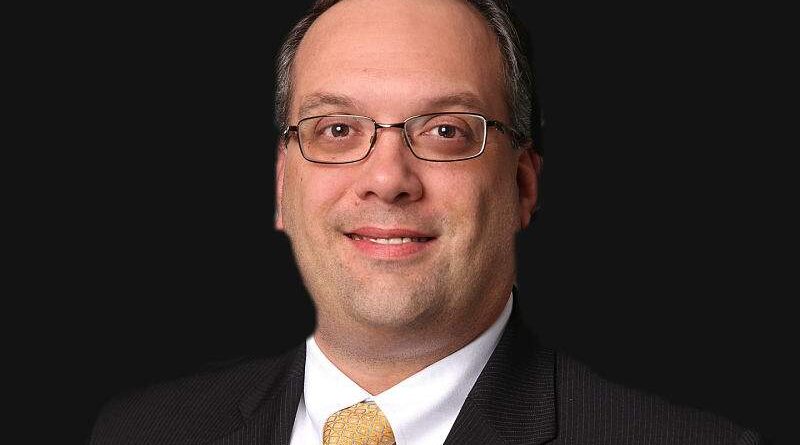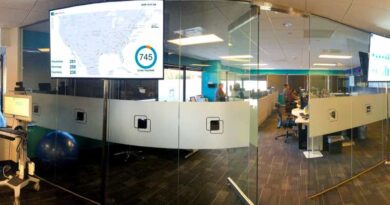University of Miami Health System Using Remote Monitoring Tool for Home Hospitalization
By David W. Reis, Ph.D., CIO, University of Miami Health System
2020 will be remembered for years to come for several reasons. Among them will undoubtedly be the novel coronavirus known as COVID-19. The nature of COVID-19 has given rise to many views on the duration of impact of COVID-19. Those estimates range from months to years. Wherever your views land on the impact timeline, one aspect of the influence of COVID-19 is how it has increased the rate of change for health care delivery outside the four walls of hospitals.
More than ever before, digital is experiencing explosive growth. The Centers for Medicare and Medicaid Services (CMS) is leading the charge to transform health care with widespread use of remotely delivered, monitored care. Health insurance firms are now adapting to cover digital health solutions that previously had not been included. Health systems large and small, along with individual physician practices, are now delivering large percentages of daily medical appointments online. This change did not happen over decades, months, or weeks.
In many cases, the change to digital enabled remote health care services happened in days starting in mid to late March of 2020. With such a massive shift in reimbursement models, changes in patient preference and acceptance by providers, we have entered a new paradigm of health care services. As such, it is safe to assume that healthcare delivery may never go back to where it was in February 2020.
Adapting and Emerging at the University of Miami Health System
At the University of Miami Health System (UHealth), which is South Florida’s only university-based medical system, our leading-edge patient care is delivered by some of South Florida’s top physician-scientists, powered by groundbreaking research from the University of Miami Leonard M. Miller School of Medicine. We quickly adapted to the need of our patients, as well as the need to provide beds in our hospitals to those who need it most by implementing a leading-edge, home-monitoring tool called Tytocare. Tytocare is a simple device that a patient can use at home for a wide variety of in-home health monitoring, including home hospitalization. It allows for synchronous and asynchronous data collection to be shared with the patient’s health care provider and virtual examination capabilities of the patient’s heart and lung sound, throat, ears, skin, abdomen, heart rate, and body temperature in real-time during a video-visit or through data capture that can be uploaded for remote patient monitoring. The broad-spectrum capability of Tytocare enables in-home monitoring of chronic conditions, home hospitalization observation, and post-procedure or post-surgery follow up care. UHealth has partnered with Tytocare to use the device for patient care in the battle against COVID-19.
Based on clinical assessment by UHealth providers, qualifying COVID-19 positive patients can be discharged from the emergency department or in-patient units to their home with one of these devices which helps patients stay isolated where they are most comfortable while creating much-needed emergency department and in-patient capacity to care for patients requiring supportive care not available in a patient’s home. The UHealth information technology department worked with Tytocare and our Electronic Medical Record (EMR) partner, Epic, to integrate data collected from the device into the patient’s electronic chart which allows for automated clinical decision support using UHealth-developed algorithms to aid our providers in monitoring and treating COVID-19 positive patients in their home. For example, the device enables UHealth patients to upload key diagnostic information such as heart rate, oxygen saturation level, and body temperature to their UHealth electronic chart. As UHealth providers review Tytocare monitored patients, the UHealth EMR indicates patients that have abnormal values, which triggers a call to the patient for additional clinical assessment.
Many health systems and private practices have had the technology capability to provide remote patient monitoring and video visits through their EMR systems for years. The rate limiting factor has not been technology, but rather the payment models offered by private insurers and CMS. The nation-wide shutdown triggered a paradigm shift in payment models and many restrictions on telehealth were lifted or changed by payers. Health systems and private practices responded robustly to payment model changes and swiftly moved the dominant percentage of office visits to telehealth visits. While telehealth visits using audio/video are effective for primary care, providers have found the need for telemetry data. Telemetry data used in conjunction with audio/video visits provide more information to clinicians and aids in the clinical assessment of patients during an encounter and helps complete a robust video visit.
We quickly adapted to the need of our patients, as well as the need to provide beds in our hospitals to those who need it most, by implementing a leading-edge, home-monitoring tool.
David Reis, CIO, University of Miami Health System
Business Interest in Digital Health Care
As seen in various published reports over the last few years, venture capital firms and investors of all types have had a wide-ranging interest in digital health care, particularly telehealth. The last two year estimates range broadly, but it is safe to say the combination of 2018 and 2019 saw over $7 billion in capital raised by telehealth startups. The first quarter of 2020 saw capital investment in digital health companies clock in at $3.6 billion, according to April 2020 report released by the Mercom Capital Group. The top-funded segments of the digital health market were telemedicine at $788M; data & analytics at $573M; clinical decision support at $446M; mHealth apps at $365M; health care scheduling technology at $306M; and wearables and sensors technology at $286M. While all digital health care segments are important in the era of COVID-19, it is the wearables and sensors segment that genuinely has the most potential to, pun intended, touch patient care the most directly.
While a blunt tool to measure impact and interest, a basic internet search of the phrase “health care wearables and sensors” returns over 35,000 results. This level of results shows a large and increasing body of publication around health care use of wearable and sensor technology, with about a third published related to COVID-19. Within the search results, there are countless trends, but the two that standout are monitoring COVID-19 positive patients in the home and predicting if someone is positive before they develop clinical symptoms or test positive using standard clinical testing methods.
As citizens in today’s world, we are facing a pandemic on a scale very few have seen in their lifetime. This pandemic is highlighting the power of teamwork to guide us through these challenging times. Collaboration among healthcare providers, technology partners, insurance companies, government agencies, venture capitalists, and patients has ushered in a new front in patient care. It is this new front that is creating a safe capacity to treat and care for patients in a setting most appropriate for their clinical condition while providing the safety net of a small in-home monitoring device, connected to an EMR, reviewed by healthcare providers.



